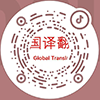Specific Solutions
Standard Pricing for General Document Translation
In today’s era of global communication, translation has become an essential tool for cross-cultural interaction and business collaboration. For clients, understanding the standard pricing for general document translation helps plan budgets effectively and choose the right service. This article explores the key factors that influence pricing and offers practical guidance for both clients and translators.
1. Language and Direction
The supply and demand of different languages directly affect translation rates. Niche languages may command higher fees compared to commonly used ones, while translations between widely spoken languages tend to be more stable. Additionally, translation direction matters: translating into a non-native language often requires greater attention to accuracy and natural expression, which may influence pricing.
2. Document Type and Complexity
General documents cover a wide range of materials, including letters, manuals, marketing brochures, and meeting minutes. Compared to technical or specialized documents, general documents typically have fewer specialized terms and lower complexity, resulting in more moderate pricing. However, even general documents require precise and fluent language, especially in business or official contexts where subtle differences in wording can impact communication.
3. Translation Quality and Proofreading
Pricing also depends on the required quality level:
Basic Level: Suitable for internal reference or casual communication; focuses on conveying the general meaning.
Standard Level: Suitable for external or formal use; requires smooth phrasing, correct grammar, and may include one round of proofreading.
Clients should clarify the intended use of the document to select the appropriate quality level and allocate budget accordingly.
4. Turnaround Time and Project Size
The urgency and volume of the translation project are important pricing factors:
Turnaround Time: Rush projects often demand extra effort or overtime from translators, increasing complexity.
Project Size: Large-scale documents may allow for negotiation, but maintaining terminology consistency and coordination among multiple translators becomes more challenging.
5. Value-added Services
In practice, general document translation may involve additional services such as document formatting, layout adjustments, or chart and table translation. These value-added services increase project complexity and may influence overall fees.
6. Considerations for Clients and Translators
For clients, understanding the logic behind translation pricing helps balance cost and quality, ensuring selection of the most suitable service.
For translators or agencies, setting transparent and reasonable rates demonstrates professionalism and fosters long-term cooperation.
Conclusion
There is no fixed figure for general document translation fees. Pricing is determined by a combination of factors: language pair, document type, quality level, turnaround time, and any additional services. Clients should consider the document’s purpose, complexity, and delivery requirements to choose the most appropriate translation service. High-quality translation is not just about language conversion—it is a key enabler of smooth cross-cultural communication and successful collaboration.


















